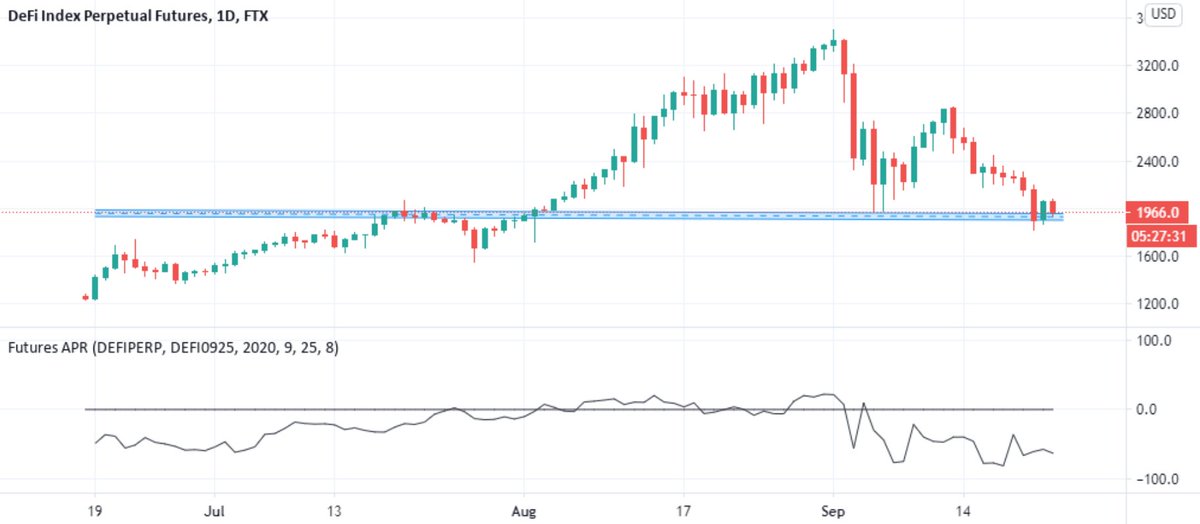
1/ Liquidity Mining rewards are currently wasteful and suboptimal
We can be smarter about defining reward amounts
I present a simple framework for determining DEX LM rewards
We can be smarter about defining reward amounts
I present a simple framework for determining DEX LM rewards
2/ First Step - Identify how much liquidity you need
Use Uniswap wBTC/ETH Pool as an example
Benchmarking to the most liquid CEXs, Uniswap is already on average 3x more liquid on a +/- 2% Depth basis
Use Uniswap wBTC/ETH Pool as an example
Benchmarking to the most liquid CEXs, Uniswap is already on average 3x more liquid on a +/- 2% Depth basis

3/ Parsing through onchain transactions, we see a dozen or so 6 figure transactions per day.
Around 1 transaction/day that is >$500,000 & <$1,000,000. Don't often see larger in a single transaction.
Some traders maybe splitting transactions for better execution
Around 1 transaction/day that is >$500,000 & <$1,000,000. Don't often see larger in a single transaction.
Some traders maybe splitting transactions for better execution
4/ So this tells us that even if we were to reduce liquidity and TVL by 67%, this would be on par with the top CEXs and it would also sufficiently service the vast majority of wBTC/ETH traders
5/ The next step would be identifying what yield will the pool equilibrate to? Yields from different strategies in crypto generally tend to drift towards each other since traders will move from capital from less profitable strategies to more profitable
6/ Given the (relatively lower) risk of IL, and current borrow/lend rates of ETH & BTC, I think 15% would be fair here.
UNI rewards are currently 18.5%.
LPs also receive Tx fees, currently projected at 3.5%.
So 22% All-in
This invites an overliquid pool to get ever larger
UNI rewards are currently 18.5%.
LPs also receive Tx fees, currently projected at 3.5%.
So 22% All-in
This invites an overliquid pool to get ever larger

7/ So imagine we reduce the pool size by 1/3 to get to the desired liquidity levels
TVL: $540M -> $180M
Yield: 22% -> 66% (10.5% Tx Fee + 55.5% UNI)
Tx Fee here doesn't change, but UNI rewards can be. Solve for Yield = 15% and that's your optimized reward
TVL: $540M -> $180M
Yield: 22% -> 66% (10.5% Tx Fee + 55.5% UNI)
Tx Fee here doesn't change, but UNI rewards can be. Solve for Yield = 15% and that's your optimized reward
8/
15% Yield = 10.5% Tx Fee + X% UNI
X = 4.5%
4.5% (new) / 55.5% (current implied) = 8%
Conclusion:
UNI Rewards for wBTC/ETH should be 8% of what they are now
83,333 UNI/day -> 6,666 UNI/day
15% Yield = 10.5% Tx Fee + X% UNI
X = 4.5%
4.5% (new) / 55.5% (current implied) = 8%
Conclusion:
UNI Rewards for wBTC/ETH should be 8% of what they are now
83,333 UNI/day -> 6,666 UNI/day
9/ This framework can roughly be applied to any DEX. Just be sure to use some critical thinking around nuances. For example, if you are incentivizing liquidity for a token that has very low CEX liquidity but high potential volume, than maybe you shouldn't use CEX as benchmark
10/ Some caveats - tx volumes can fluctuate, so can UNI price. These will result in dynamic yields.
What's interesting is that both of these can be measured onchain, so you can theoretically program a dynamic reward based on a target depth & yield %
What's interesting is that both of these can be measured onchain, so you can theoretically program a dynamic reward based on a target depth & yield %
11/ Obviously, UNI farmers would be against reward reductions. We've already seen a @CurveFinance proposal for rewards reduction voted down by one of the largest miners.
12/ Here's where we see a problem with onchain governance. The largest miners don't have much UNI themselves. They farm and dump.
BUT they have large resources and have the strongest incentives to vote. Nothing stops them from borrowing a large amount of UNI to vote against
BUT they have large resources and have the strongest incentives to vote. Nothing stops them from borrowing a large amount of UNI to vote against
13/ There are a few solutions to this that I think all on-chain governance systems should implement, but that's for another discussion.
Let's see what happens with UNI.
Let's see what happens with UNI.
14/ For projects that haven't yet launched and therefore don't know baseline protocol usage and token prices, try thinking about liquidity mining more tactically. No need to have a 5 year plan upfront
https://twitter.com/Rewkang/status/1290744213160697856
15/ Think scientifically. IMO launch for a week or two first with no rewards and see how much traction there is.
Then try a 1-2 week pilot program. Analyze the results and optimize. LM rewards can be useful but dilute other tokenholders - they should be efficiently spent
Then try a 1-2 week pilot program. Analyze the results and optimize. LM rewards can be useful but dilute other tokenholders - they should be efficiently spent
• • •
Missing some Tweet in this thread? You can try to
force a refresh








